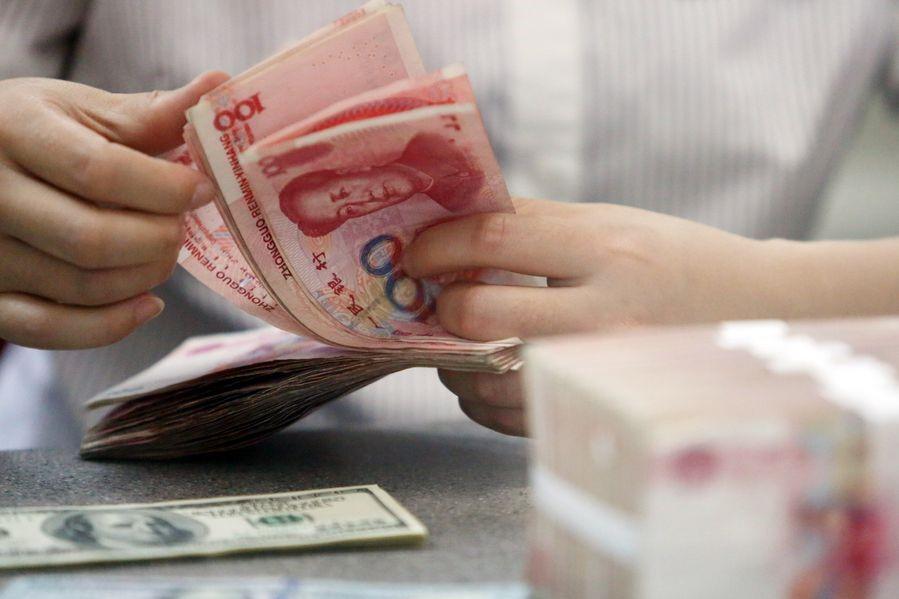

A worker counts Chinese currency renminbi at a bank in Linyi, east China's Shandong province. [Photo/Xinhua]
While downward
The offshore renminbi — the RMB traded outside the Chinese mainland market — jumped more than 460 basis points against the dollar to 7.1665 when trading closed on Wednesday, reporting the strongest daily surge in a month, according to market tracker Wind Info. The offshore RMB has thus gained 950 basis points against the greenback since July 6. The onshore RMB has also jumped 450 basis points to close at 7.1650 on Wednesday, regaining the 7.2 mark.
On the other hand, the U.S. dollar index has dropped by 1.92 percent since the beginning of July, with a noticeable slide of 1.06 percent on Wednesday.
Zheng Houcheng, chief macroeconomist at Yingda Securities, said that there are two major reasons for the RMB's recent rebound. One, the United States registered lower-than-expected nonfarm payroll employment in June, which exerted negative impact on the dollar index. Two, mounting market expectations for more stabilizing economic policies from China's top leadership helped push up the RMB's value.
Yi Gang, governor of the People's Bank of China, the country's central bank, said in an article recently published in the periodical Economic Research Journal that the elasticity of the RMB exchange rate has significantly increased over the past few years.
As China has placed more emphasis on the autonomy of interest rate policies amid the drastic interest rate changes in other major economies in recent years, the economic fundamentals of the nation have remained stable, which in turn has supported a stable and resilient foreign exchange market, Yi wrote.
China's potential economic growth rate is expected to remain within a reasonable range. It will pave the way for the country to keep normal monetary rate and positive interest rates, he added.
Experts from UBS Global Wealth Management's Chief Investment Office said in a note on Thursday that China's economic slowdown in the second quarter was the major reason pushing up the RMB's exchange rate against the U.S. dollar to the 7.2 mark.
But the RMB's foreign exchange rate has remained below market expectations since the end of June. It may have touched this year's bottom at the 7.2 to 7.3 level, the experts said.
According to UBS estimates, China's GDP growth rate will return to 4.4 percent to 4.5 percent in the third and fourth quarters, with more stimulative measures for the property market and supportive fiscal policies to be anticipated later this year.
Combined with the narrowing differences between Chinese and U.S. bond yield, the RMB's exchange rate will return to 6.9 by the end of this year, UBS experts said.
While China's monetary and foreign exchange policies will remain generally stable later this year, there is still room for lowering interest rates, said Lu Zhengwei, chief economist at Industrial Bank. There will likely be at least one cut in reserve requirement ratio in the second half of this year under conservative estimation, he said.
But Lu also noted that the capital market has been exerting greater influence of the Chinese yuan's value. The foreign capital flow in the Chinese bond and stocks market should thus be closely watched to understand how the RMB exchange rate will perform, he added.
